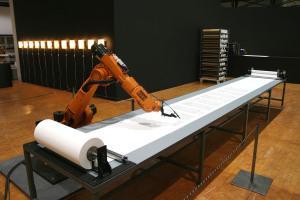
Imagine a classroom of 32 primary kids. As it’s a Friday afternoon – they are keen for the school week to end, and for the freedom of the weekend to begin. But before their weekend can start – you hand them a page out of a book and ask them to copy it out long hand. After the groans subside, the scribbling begins. And after a while – one by one – you gather in 32 completed copies and you send the kids off to enjoy their weekend.
What would you find as you start to read thru the manuscript copies they have handed in to you? Well – depending on how well the kids can read and write – you will probably find most of the kids have made a pretty good attempt at reproducing the words on the page. You will also probably find many mistakes as you read thru the hand written copies.
Spelling mistakes
Words missed out
Maybe whole sentences omitted
Perhaps even sentences or phrases in the wrong order
Now – imagine that you shred the original page that the kids started from. And your goal is to recreate that original page of text exactly. How are you going to achieve your goal? Well – you would use the kids’ copies to recreate the lost original page. It’s going to take a bit of work – but it should be doable. Right?
One kid misspells a crucial word in a sentence…but the other 20 manuscripts reproduce this word properly. We therefore know what the original word actually was…because we read it in the majority of the copies. So we use that word to recreate the original.
One kid gets a paragraph containing two sentences in the wrong order. But other manuscripts don’t make that mistake. So if we go with the majority order represented across our copies…then we have a great chance of reproducing what the original page said.
What has this got to do with the accuracy of the New Testament?
Well – let me introduce David Instone-Brewer, Senior Research Fellow in Rabbinics and the New Testament at Tyndale House.
http://www.tyndale.cam.ac.uk/index.php?page=david-instone-brewer
He says three things.
FIRST – there are lots and lots of ancient copies of the New Testament. Copies of copies of copies and fragments; literally thousands. And more and more copies are being found all the time. The earliest ones date to the 2nd century. David himself has discovered some 4th century fragments of Romans chapter 8 that – many centuries ago – were rolled up and used as part of the bindings of old leather bound books, that wound up at Christies Auction House in London. No other work of antiquity has such a vast catalog of early copies in the original language. The New Testament is a unique historical work.
SECOND – as the ancient copies are gathered together, it becomes clear that numerous minor copyist errors exist. After all – these copies were created by different people over a 2000 year period. From professional scribes, to people taking their own personal copy for use at home. There are three bigger issues which are also understood from the copies. The end of Mark’s Gospel has gotten lost, 1 John 5:7 is longer in late Latin translations than it is in the earliest Greek Translations, and the incident in John 8 with the woman caught in adultery sometimes appears in different places in some copies.
THIRD – if we go back to our classroom example of the reconstitution of the page by the school kids…this is a pretty good picture of the process Scholars use to re-construct the words and the meaning of what the original New Testament authors actually wrote.
Yes there are numerous copyist errors in the surviving manuscripts – and there remain some minor disputes in academia over certain words – but absolutely none of these disputes change the meaning of the New Testament text.
In other words – yes. We can be sure.
Thru the science of textual criticism and translation of the recovered text from the original Greek into modern language…scholars assure us that the New Testament we read today is a 99.9% accurate reflection of what the original authors originally wrote.

